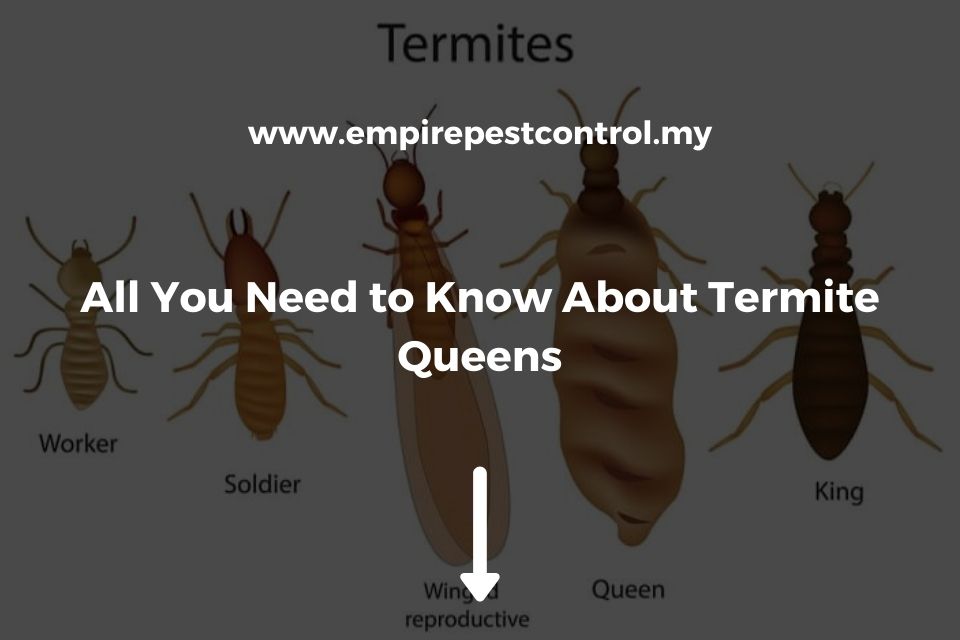Termites often sneak into our homes, chomping away at the very bones of our houses. If left unchecked, these little critters can wreak havoc, turning solid structures to dust. Ever wondered how much damage they really cause? Imagine this: your home, your sanctuary, could become their buffet, costing you a fortune in repairs. For those who want to keep their living spaces safe and sound, you’ll discover tricks and secrets for keeping these pests at bay. We’re diving into the world of termite defense, shining a light on methods that might not be widely known but are super effective. By the end of this journey, you’ll be armed with the know-how to protect your home from becoming a termite’s next meal. So, why should you keep reading? Because your home is your castle, and I’ll show you how to keep the gates closed to invaders.
Termite queens are the only female termite in the colony and she is responsible for making all the eggs. If you suspect have a termite queen lurking around your home, you need to hire a pest control company to help you right away.
The best thing to do is to get a quote for termite control services to effectively stop termites from destroying your home.
In this blog post, we will discuss everything you need to know about termite queens and what they do in order for your home’s safety.
Need help with termite issues? You can click here to contact our termite specialist.
Contents
What is a Termite Queen?
Termites are indeed a huge pain since these little critters can wreak havoc into your property with no remorse. However, do you know what’s worse? The queen that’s making them!
For starters, termite queens are always female and are the only one in a colony that lays eggs, meaning she is vital to every termite. The queen can lay up to 500 eggs every day, which makes her a very busy lady that constantly supplies a whole termite army that can eat your entire house away.
Queen termites usually create a termite colony by mating with a termite and then building a nest. However, termite queens that are found in swarmers do not need to mate with an actual male and the eggs come from winged males called alates instead.
These female insects also have wings but they’re too small for them to fly away on their own; however, it enables them to move around easier when it comes to finding food.
The wings are also used to signal other termites that the queen needs help with creating a nest or if there’s an intruder in the area. Plus, their size enables them to groom themselves and make sure all of their body parts stay clean and protected from any danger while they’re out laying eggs all day.
Queen termites have a lifespan of up to 30 years and are usually the longest living termite in a nest.
In addition to being responsible for laying eggs, these larger insects also make sure that all of the other smaller termites have food as well. They’re programmed to make their way over to any new sources of food, and then they pass it on from one member of termite to another.
How to Properly Identify a Termite Queen
A queen termite is quite different from a normal termite. The best way to differentiate the two is by looking at the head. Queens are the only ones with a bigger, rounded head and mandibles that have more of an arch to them than other termites in the nest.
A subterranean termite queen is considered to be a magical creature with extraordinary power. Her body can change color to match her surroundings so she blends in, and if that’s not enough, the worker termites who swarm around her are also the same shade as their leader – matching both humans’ eyesight and infrared vision.
Furthermore, a queen termite has six small wings, which are held flat to the body so that they don’t interfere with her duties in any way.
How to Stop Termite Queen From Invading Your Property
If a queen termite gets attracted to your home, then you’re certainly in for a lot of trouble. However, there are certain things that you can do to protect your home from termites and these are:
- Always make sure there is no deadwood in your property since this can be a food source for termites and make sure that the surrounding of your property is clear since this can also be an entry point.
- Checking for any moisture penetration in walls or leaking pipes, as well heaters, are good places to start looking if you want to find out where all the bugs might come from.
- Stopping termites by having a regular pest control service is also important, so professionals can regularly check and treat your property for termites.
- Trim tree branches that may be touching your home’s walls or roof so you can stop termites from being able to climb onto your property.
Wrapping it up
The termite queen is the only member of her colony that can reproduce, but she must have a king.
It’s important to know this information if you’re looking for ways to keep your home safe from pests. In order to be successful in preventing and controlling infestations, homeowners need to understand how termites operate as colonies.
If you want more help with keeping bugs out of your house or would like an inspection before buying property, contact our experts today!

